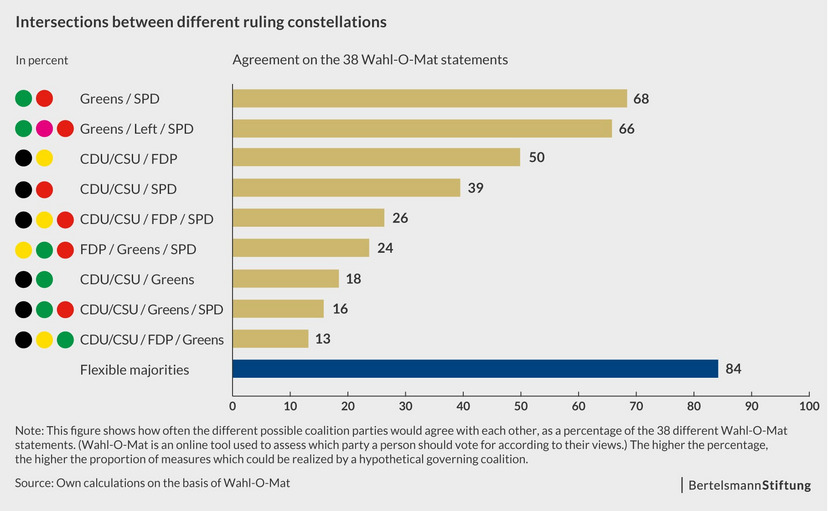The traffic light coalition is sticking with tradition. In Chapter IX of the coalition agreement, it has settled on rigid coalition discipline with a pledge of allegiance: “In the German Bundestag and in all of the committees it appoints, the coalition factions vote as a unit. (translated from German)” The traffic light coalition is therefore following the norm of rigid coalition discipline that has been established in Germany for decades. This rules out flexible majorities. The possibilities for shaping policy shrink to the agreed common denominator, limited to the scope which the coalition parties grant each other. In Germany, this rigid form of coalition discipline is considered the epitome and guarantor of stability and reliability. However, in a polarized multiparty system, many problems are built into this approach, affecting and narrowing the scope of policymaking. For the political program needed for a decade of modernization, it could prove inadequate. In terms of the form of cooperation envisaged so far, the traffic light coalition is therefore not yet a coalition for progress.

© Veniamin Kraskov - stock.adobe.com
Modern governance - How the traffic light coalition could modernize joint governance – three suggestions
Governing with flexible majorities expands the scope for political action. Despite this, the traffic light coalition continues to rely exclusively on rigid majorities, loyalty oaths and rigid coalition discipline. There are other ways of making modern governance work in a multi-party system.
Content
And there would be alternatives. Looking beyond our own backyard, other countries demonstrate the possibilities and opportunities of modern approaches to governance, with more flexible majorities and more agile forms of cooperation between parties. These could also be harnessed for the new Bundestag and the new federal government. Flexible majorities would offer enormous additional potential when it comes to shaping policy. We illustrate the possibilities of flexible majorities after the 2021 general election using the party positions in the Wahl-O-Mat, an online tool which allows people to find out which party they should vote for based on their views. Based on the agreement between different parties on these statements, we can first assess how well different alliances can cooperate with each other. The Wahl-O-Mat thus effectively becomes a Coalition-O-Mat. The figure shows the intersections of different constellations. First, it shows that the highest level of agreement is between parties that would not achieve an absolute majority in the new Bundestag. In contrast, the traffic light coalition is relatively poor in common ground, at 24 percent. What is striking is that flexible majorities have the longest bar on the chart, longer than any of the mathematically possible alliances. On over 80 percent of the statements, parties – freed from the coalition straitjacket – could come together to form a majority.
So that modern governance with more flexible majorities can be introduced in a low-threshold manner and become a more familiar approach, we therefore propose three concrete additions to the coalition agreement: first, the introduction of agree-to-disagree clauses “in speech” and “in vote”, for example on the question of speed limits. In addition to this, we propose establishing orientation debates with voting behavior made public and negotiating legislative agreements with the opposition. The latter could be used to reform debt reduction, which could not be implemented within the straitjacket of the traffic light coalition. In this way, the traffic light coalition could also modernize joint governance. Voters would strongly approve.




